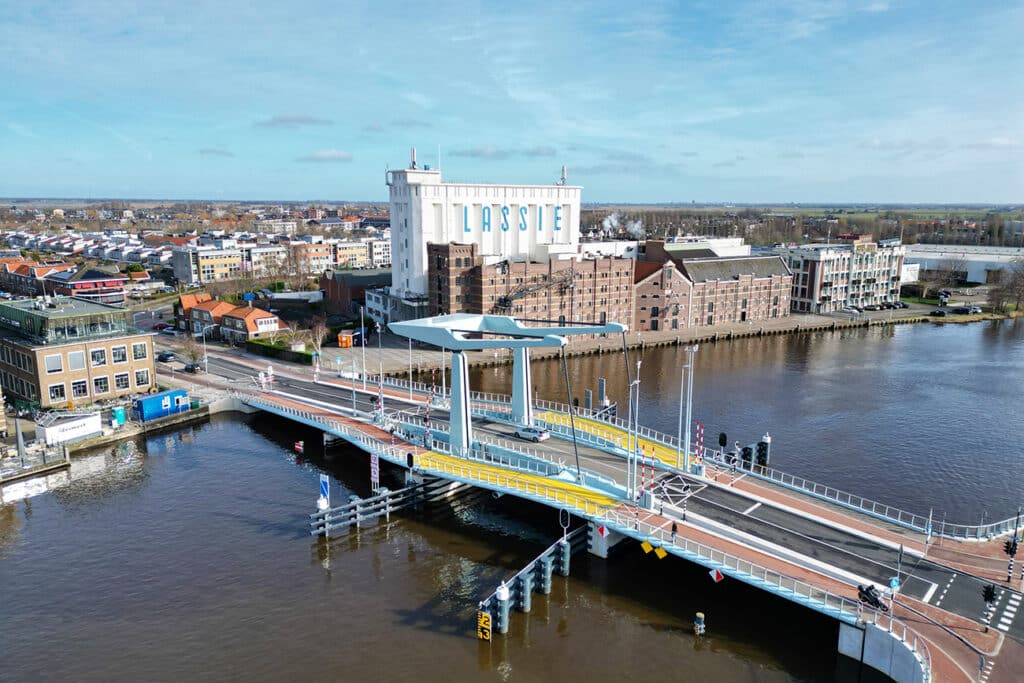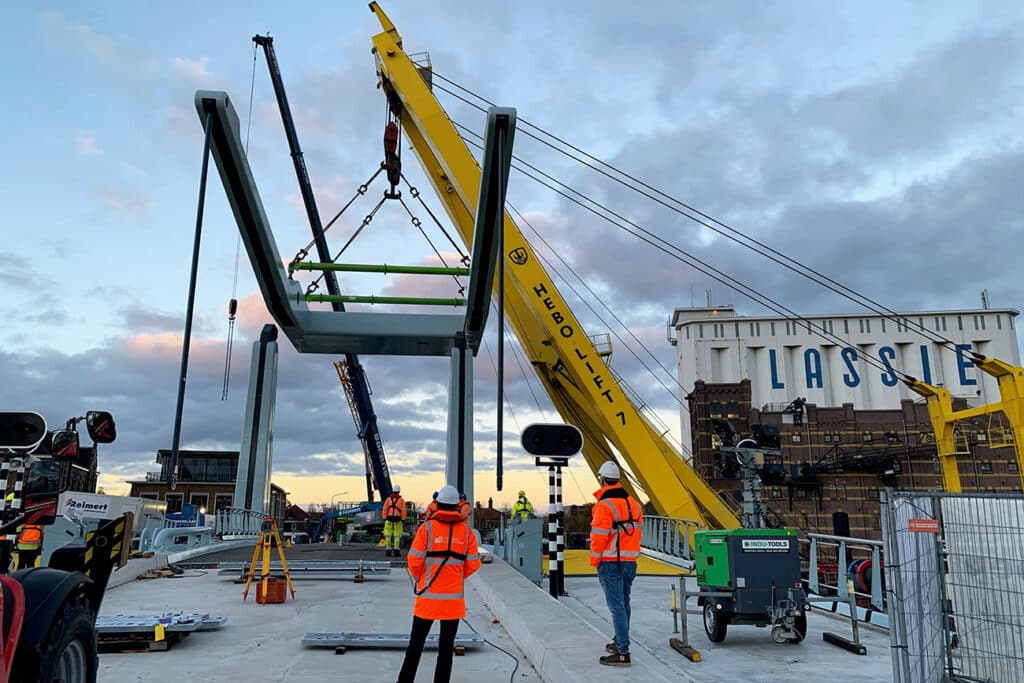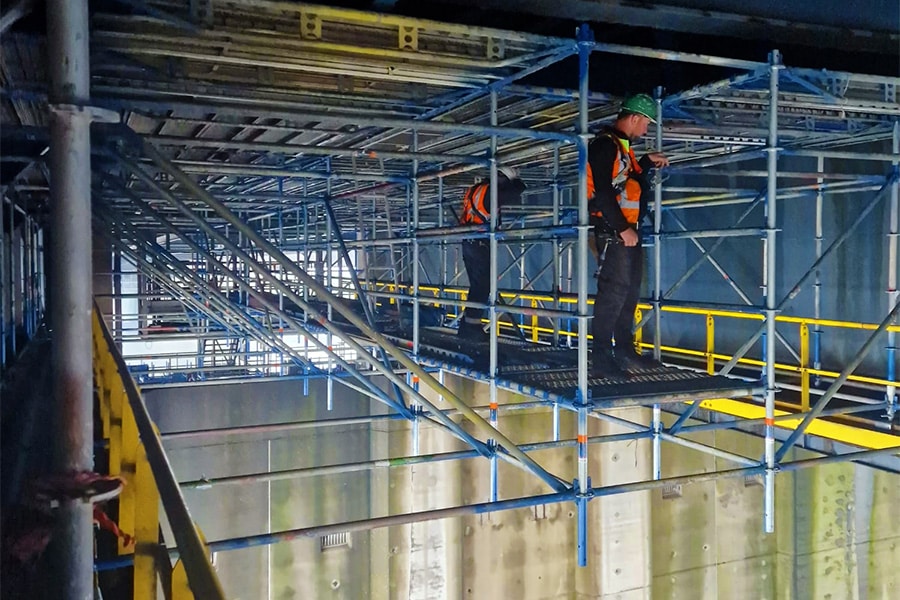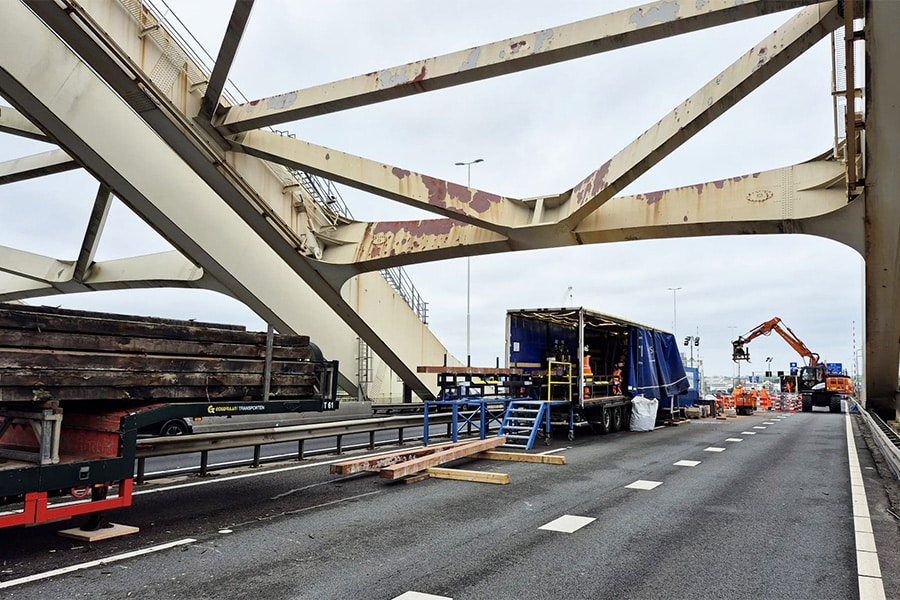
New Zaan bridge Wormerveer hinges like a Swiss army knife
On the site of the old Zaan bridge in Wormerveer, a lot of hard work has gone into the construction of a new steel bridge. And a very special one too, with two pivots that look like a Swiss army knife and bicycle footpaths winding around the outside of the hameitorens. In order to make the architectural design feasible with three traps (!), engineering firm Boorsma was called in; the specialist in movable bridges.

The existing Zaan bridge between Wormer and Wormerveer dated from the 1960s and was in dire need of replacement. The new bridge has a wider and higher clearance. As a result, ships can pass more easily and the bridge needs to be open less often and for less time. The new Zaan bridge also offers more space for cyclists and pedestrians, improving safety. The renovation of the Zaan bridge is part of the provincial program "Vaart in de Zaan!". With this program, the province of North Holland wants to improve the navigability of the Zaan, so that companies can continue to use and expand waterborne transport.
Super slim balance
The province of North Holland itself speaks of a traditional Dutch drawbridge, but the new Zaan bridge is really an architectural masterpiece. Even Anne Jan Breimer of Ingenieursbureau Boorsma knows that. "Our scope involved working out the final design and the execution design, including the workshop drawings of the steel structure on behalf of HSM Steel Structures. And that was quite a challenge, given the underlying visual quality plan with a super slim balance and a pivot point in both hameitorens inspired by a Swiss pocket knife with a recessed slot. The design further consists of three traps, one for road traffic and two for bicycle and pedestrian traffic. The latter two are double-curved and meander around the hameitorens with a span of 20 meters."

Removable billets
A total of 350 tons of steel is involved in the bridge. "One of the challenges in the design was to keep the balance as slim and light as possible," says Breimer. "The total weight was not to exceed 265 tons, because the balance has to be able to be taken out by a floating trestle for future maintenance. However, moving the bridge requires more ballast. We optimized the design so that additional control ballast was used. This is normally only applied at the back of the balance, but proved insufficient to stay under the total weight. To this end, we provided five additional compartments: large heavy removable ballast boxes in which steel billets are neatly stacked. Thus the removable ballast totals 88 tons and the non-removable ballast 128 tons."
Lever Clutch
Another requirement that engineering firm Boors-ma came up with a solution for was being able to take out the slow-moving traffic trap without affecting the operation of the bridge. "In the event of a collision, one of the two traps must be able to be taken out for repair. We have solved that with a linkage linkage. Both traps for bicycle and pedestrian traffic are connected to the trap for road traffic via a linkage," Breimer explains. "When the slow-traffic trap is dismantled, the linkage is released and the trap can be lifted out of the main pivots. Then the section below the tie rod is fitted with additional ballast to offset the weight of the removed trap. In this way, the bridge is balanced again and functions as usual. That principle applies to both traps for bicycle and pedestrian traffic."
To ensure that the three traps do not clatter, engineering firm Boors-ma designed the four bearings with positive bearing pressures. "To this end, all three traps are provided with a counter-seam, an additional deformation in the mold. After assembly they still deform slightly, so that a positive bearing pressure occurs on all four supports. After the new Michiel de Ruyter Bridge in Urk, which we engineered in detail and which was opened earlier this year, the new Zaan Bridge is another wonderful reference for our firm. A project that we have thought out down to the last nut and bolt," Breimer concludes.



